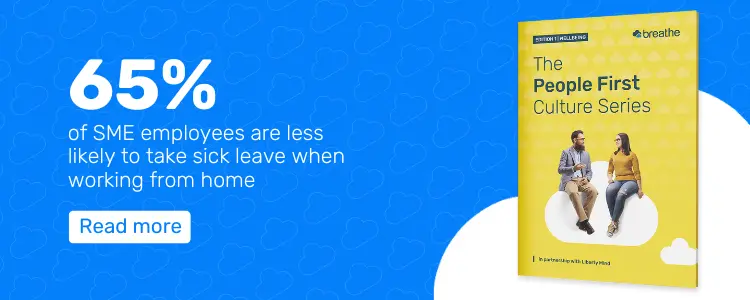What is clan culture in an organisation - and what are the pros & cons of this cultural style? This blog contains what SMEs need to know.
Skip to:
What is clan culture in an organisation?
Clan culture is the name given to an organisation with a family-like feel. Deriving from late middle English, this rather new-age term is adopted from the old-age Scottish Gaelic ‘clan’, meaning offspring or family.
What are the characteristics of clan culture?
When applied to company culture, clan culture organisations that are close-knit, work together as a community and typically place their peers and employees' needs first.
Companies embracing clan culture tend to encourage the following as part of their corporate culture:
-
Equal decision-making power
-
A sense of unity and togetherness
-
Collaboration from top to bottom
A clan culture leadership style tends to revolve around making all aspects of this together, so that everyone feels they are helping to move the company forward together.
With more businesses, HR consultants and SME CEOs searching for an ethos that fits their unique 'vibe', it's about time we got to grips with the different types of company culture. As we’ve seen, however big or small, businesses typically fall into one of four different company culture models.
Is clan culture the right prototype for your business goals and team?
It really depends on your organisation, and the people that make up your team. To start with, it’s worth investigating the pros and cons of clan culture for organisations.
First up, what are the advantages of clan culture for organisations?
Clan culture pros and advantages
Promoting flexibility in terms of dress code, hours and working locations can help towards developing a respectful professional relationship between superiors and their team. But what other benefits does a clan culture breed?
Quick summary: Clan culture pros
|
Productivity |
Giving everyone a say helps foster a sense of togetherness and personal investment in their work. |
|
Clear communication |
Helps employees think and work as a dream team. |
|
Ideas and feedback |
Open, honest conversations encourage employees to share thoughts for the benefit of everyone. |
|
Healthier working environment |
Focusing on people draws your attention to their wellbeing as a priority. |
Let’s dive into these in a little more detail…
Productivity and company growth
A happy team creates a happy business. There is positive correlation between satisfied employees, productivity and business growth. When employees' needs are put first, office morale is high and staff feel valued within the workplace.
Instead of complaining and gossiping, employees who trust their managers and colleagues feel more driven to go above and beyond their general workload.
They can openly voice their ideas, take greater risks and step out of that box - when your whole team's behind you, it's comforting to know they can catch you if you fall.

Serious about your company culture?
Join the Breathe Culture Pledge today and commit to putting your people first.
Clear communication
Adopting an organisational culture with a clan or 'tribe-like' feel helps employees think and work as a dream-team.
Just as we're encouraged to regularly sit down and 'chew the fat' with our families at dinnertime, there are many marked benefits for companies that communicate freely and often.

Clan cultures put more precedence on weekly one-to-ones, team presentations and meetings where everyone is invited.
From the cleaner to the CEO, clan cultures urge the company as a whole to sing from the same hymn sheet. It's no surprise then that the more employees you involve, the louder and further your message can spread.
Ideas and feedback
Family-like culture adopts a more 'inclusive' approach; welcoming ideas and feedback with open arms (a bit like a much-missed daughter back from travelling).
From a review standpoint, it's actually beneficial to air out the office laundry and collectively seek honest feedback.
Only when you know there's an issue can you scrum together and produce resolutions to move past them.

Unsurprisingly, employee surveys, suggestion boxes and creativity rooms are prominent features in the rich tapestry of clan culture traits. Look around you.
Does your office offer an environment or provide a forum or place for ideas and feedback that's open to all? Designating an area for such creativity can help staff align with your business ethos, goals and procedures and thus sets the wheels in motion for lucrative success.
Healthier working environment
When you focus your attention on the people who make up your team and company, their wellbeing, health and even personal goals sharpen into the forefront. We've touched upon the positive effect that designating different areas, rooms and visuals for creative idea generation can bring, but clan culture urges companies to nurture their everyday office space too.
Now, we're not suggesting yoga mats in every corner or even sweeping through a cloud of incense to find your CEO imitating an American-Chief-like sacramental ceremony at the end of each quarter. No, just remember to water the plants, open the blinds to let in the natural light and take a deep breath when the going gets tough.
It could be the cornerstone to helping your company culture flourish.
Clan culture cons and disadvantages
Of course, there are always some potential disadvantages of clan culture—like any type of culture you may look to adopt as part of your business.
Quick summary: Clan culture cons
|
Too much talk |
Over-collaboration isn’t always productive. |
|
The boss is not the best friend |
Even when power is shared equally, someone still needs to lead. |
|
Personality clashes |
Balancing individualism and a ‘clan’ mentality can be challenging. |
|
Inappropriate behaviour |
There's a fine line between employees being a ‘family’ and invading someone's space. |
But what do these actually mean for your business, and how can you overcome these clan culture cons?
Too much talk
There's a very fine line between communicating enough and over-collaboration. We've all been there. Absent-mindedly sat in a meeting and unable to provide or take anything valuable from it because we're so consumed and distracted by our own work schedule.
Our advice? Push past unnecessary discussions for discussions' sake. Set company meeting guidelines and visually remind employees of these by printing them out on a poster or pop-up for each group space.
The boss is not the best friend
As the boss or a senior manager it’s great to build a rapport with your staff. But boundaries are important. You can have fun with your team, join in and even lark about at times but ultimately you need a good leader to guide and assert authority when necessary.
Our advice? Remember you are not the best friend. Stop following your team on Instagram and commenting on their Facebook. Keep your social life contained and find ways to help them do their best job.
Personality clashes
Inevitably, when you promote employee individualism and flexibility alongside a 'one vision' company, you run the risk of personality clashes and stepping on toes. It’s tough going against the grain and if you're stepping into a new pack, singling yourself out by raising a different opinion takes a serious amount of courage.
In this instance, clan culture can lead to blind spots where your employees could fear challenging a wrongly held group assumption or collective prejudice.
Our advice? Swap the red rag for a plan that sets your team up for success. Look back at C.V.s, appraisals and employee surveys; what are their strengths? Does everyone know their role and place in the team? Ask questions, listen carefully and then establish clear goals.
Oh, and play your cards right. Why not gather each member of your team and give them a set of numerical cards? Use these in a open setting to vote on ideas and suggestions. The ideas with the highest combined total are the ones that are then pushed to the top of the to-do-list.

Inappropriate behaviour
Likewise to communication, there's a very fine line between encouraging employee jollying and invading a person's basic rights. Clan culture workplaces can trip up if their team misunderstand:
- What clan culture is - 'But I thought the rule is there's no rules', or even
- That happy-go-lucky office 'banter' may not be viewed as such by the recipient.
Remember to speak to your HR advisor and clearly define the lines of what is acceptable behaviour in terms of these tricky employee/employer harassment and discrimination cases.
Our advice? Set boundaries and make sure your employee contracts include the company's grievance procedures in black and white. Uploading this to an all-can-access cloud-based software like our very own, means that employees know where they stand, wherever they are.
Examples of businesses using a clan organisational culture
There are plenty of examples of clan culture in businesses, but a few stick out.
|
|
A Silicon Valley start-up. Maybe you’ve heard of them? Famous for their collaborative, innovative work environment, Google encourages open communication, idea sharing and autonomy. They even have individuals whose entire job is to keep employees happy, and to sustain productivity! Think chef-prepared meals, free health and dental care, ping pong, video games and more. |
Patagonia
|
|
An outdoor apparel company, Patagonia places huge emphasis on promoting a work-life balance, employee wellbeing, and environmental responsibility. Each Patagonia employee is encouraged to be collaborative in an inclusive workplace, and given the freedom to explore their passions in or outside of it. |
Breathe - yes, that’s us!
|
|
Funnily enough, Breathe is a great example of a company using clan culture. We foster this by taking care to collaborate across our business, with a people first approach that values open communication. It’s key to our culture, and we believe, to the success made possible by our ‘clan’ of colleagues. |
A strong clan culture starts with putting people first
No matter the company, the locale, or the industry, companies who adopt a clan culture share one thing: They put their people first.
That includes encouraging collaboration, inclusivity, and open communication. But it also means looking after the wellbeing of each and every one of your employees. And what wellbeing supports employees are looking for from your organisation.
As part of our People First Culture Series, we looked into what wellbeing supports employees are looking for from your organisation, whether home working is helping or hindering employee wellbeing, and much more…

Author: Aimée Brougham-Chandler
An IDM-certified Digital Copywriter as of February 2023, Aimée is Breathe's Content Assistant. With a passion for guiding readers to solutions for their HR woes, she enjoys delving into & demystifying all things HR: From employee performance to health and wellbeing, leave to company culture & much more.







